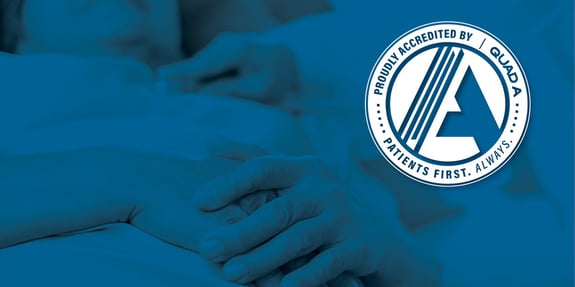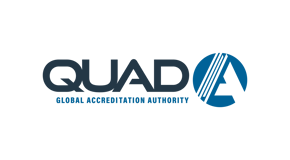Procedural Standards Update: Capnography
To promote patient safety, improve quality of care and decrease adverse events for all procedures performed in an office- based setting, QUAD A is implementing new standards for the Procedural program. This standards revision applies only to offices participating in the QUAD A Procedural program. If you are not sure whether the change applies to your facility, please contact the QUAD A office.
Standards Manual and Checklist V3.1 Effective 1/31/2018
The use of capnography is an evidence based practice recommended by professional organizations and societies such as ASA and AANA, as a standard of care for patients receiving moderate sedation, deep sedation, and general anesthesia. Some states have also begun mandating capnography for such cases. Further, this standard has already been implemented in the QUAD A Surgical program, this revision merely brings the Procedural program in line with existing monitoring requirements in the surgical setting.
In order to maintain accreditation, office-based practices will be required to provide continual monitoring of end tidal CO2 for moderate sedation, deep sedation and general anesthesia in the office-based setting.
QUAD A Accredited facilities must meet the following standards effective January 31, 2018:
200.071.095 B,C-M,C
A carbon dioxide monitor is present and used on all moderate sedation, deep sedation and general anesthesia cases.
900.021.016 B,C-M,C
Patient monitoring during anesthesia consists of end tidal carbon dioxide sampling on all moderate sedation, deep sedation and general anesthetics.
-Continual monitoring for the presence of expired carbon dioxide shall be performed unless invalidated by the nature of the patient, procedure, or equipment. Quantitative monitoring of the volume of expired gas is strongly encouraged.
-Continual end-tidal carbon dioxide analysis, in use from the time of endotracheal tube/laryngeal mask placement until extubation/removal or initiating transfer to a postoperative care location, shall be performed using a quantitative method such as capnography, capnometry, or mass spectroscopy. When capnography or capnometry is utilized, the end tidal carbon dioxide alarm shall be audible to the anesthesiologist or the anesthesia care team personnel.
900.023.005 C
Every patient receiving general anesthesia shall have the adequacy of ventilation continually evaluated. Qualitative clinical signs such as chest excursion, observation of the reservoir breathing bag, and auscultation of breath sounds are useful.
900.023.010 C
When an endotracheal tube or laryngeal mask is inserted, its correct positioning must be verified by clinical assessment and by identification of carbon dioxide in the expired gas.
Any Procedural surveys conducted after the above date will include this requirement regardless of when the office first applied or first became accredited. This release is intended to provide advanced notice to accredited facilities of this change.


